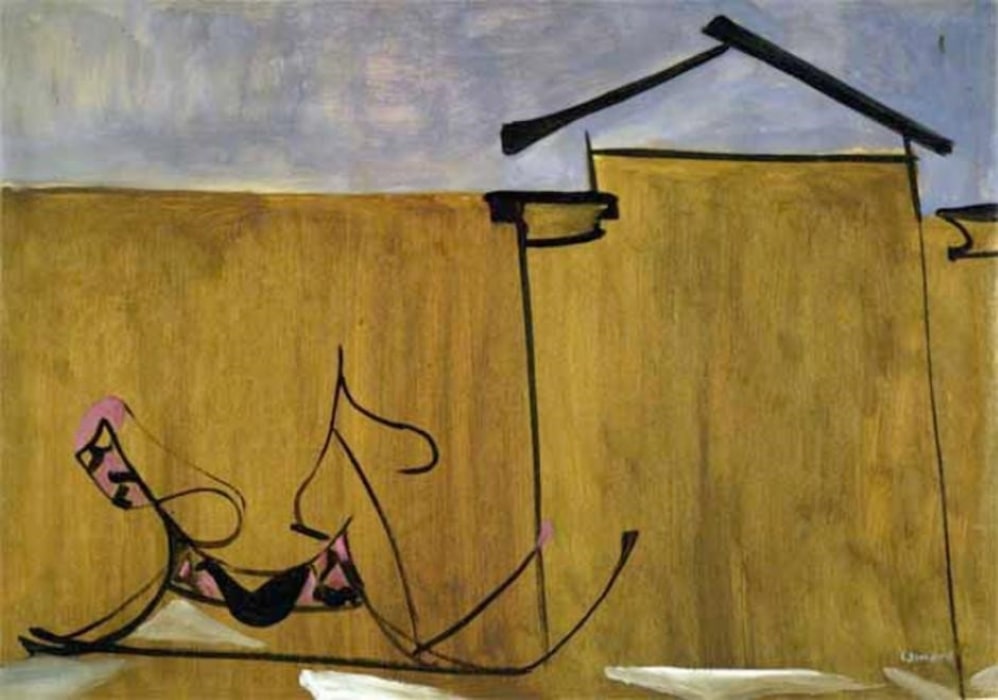© Camaro Stiftung
27 September marks the 120th anniversary of the birth of the painter, multi-talented artist and former dancer Alexander Camaro. The Camaro Foundation opens on 1 October 2021 with “Camaro’s Stages. Major works from 1946 to 1991”, a series of exhibitions dedicated to the question of how and why Alexander Camaro became an artistically leading, formative figure in the first decades of the enclave of West Berlin, although he worked rather quietly and without grand illusions.
From 1930 until the end of World War II, Alexander Camaro, a student of the expressionist Otto Mueller, was primarily a stage artist. From 1945 onwards, he concentrated on painting, drawing and only secondarily on scenic design. Until the 1960s and 1980s, he enjoyed steadily growing success with his paintings at home and abroad. His paintings found their way into German and Berlin museums. He participated twice in the documenta in Kassel. His work was also exhibited in Switzerland and the USA.
His reputation was that of being a “literary painter”. The painter Werner Heldt saw him as a “poet”, the art critic Will Grohmann as a “romantic”. In his own understanding, Camaro was more of a thinker and consciously a magician. The subject of “stages” interested him not only because of his past as a dancer, ballet master, circus performer and his activity as co-founder of the artist cabaret “Die Badewanne”, which began after the war. He was interested in the idea of world theatre, in the question of which spaces and motifs an artist could paint after 1945.
“Here is the place of pleasure and pain”, he wrote in 1947 about his group of works “The Wooden Theatre”. He understood his painting and his motifs, which appeared spatial and often even scenic until the 1990s, as “allegorical signs”.
“Camaro’s Stages. Major Works 1946 to 1991” as an exhibition is not dedicated to the question of whether the painter was concerned with abstraction and representationalism. The focus is on the meanings, the depth and the many human aspects that Camaro’s paintings continue to convey forcefully.
Alexander Camaro (civil name: Alphons Bernhard Kamarofski) was born in Breslau in 1901. His creative life was shaped by the visual and performing arts and influenced by the ban on working and exhibiting during the Nazi dictatorship. It was only after the war that a productive painterly phase began. In 1949 Camaro was one of the co-founders of the legendary Berlin artists’ cabaret “Die Badewanne”, which had a surrealist influence. Alexander Camaro was active conceptually and as a performer, including as a painter, dancer and pantomime artist. In 1951 he received the Berlin Art Prize of the Academy of Arts. One year later he was appointed professor of painting at the Berlin Academy of Fine Arts. Alexander Camaro died in Berlin in 1992 at the age of 91.
CAMARO’S STAGES. Major works from 1946 to 1991
WHEN?
Friday, 1. October to Thursday, 18. November 2021
Opening
Thursday, 30. September 2021, 7 pm
Note from the Camaro Foundation: A relaxed atmosphere with a glass of champagne is currently only possible by adhering to the 2G pandemic rules. We therefore ask all visitors to show us their corresponding proof (vaccinated/healed) before entering.
WHERE?
Alexander und Renata Camaro Stiftung, Potsdamer Straße 98a, 10785 Berlin-Tiergarten






